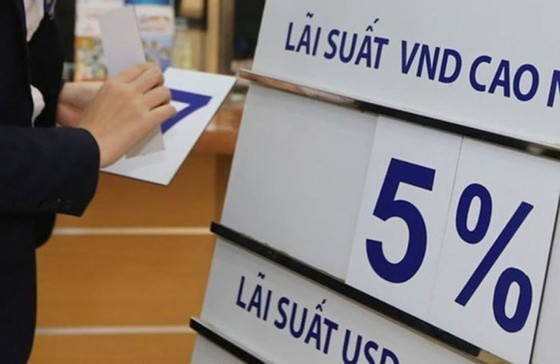
Drop in liquidity
Since the holidays, liquidity in the market has recovered. According to the matching value of HoSE, in the last 5 trading sessions from 4 May, the average matching level reached VND 8,652 bln per session. This is a pretty good recovery compared to the average of 2 weeks before the holidays at about VND 7,821 bln per session.
However, an increase of less than 11 percent is not too impressive when compared to the average of the first 2 weeks of April 2023 which was about VND 11,673 bln per session. This number is even smaller compared to the last 2 months of 2022 when the stock market bottomed out and had a recovery span of more than 15 percent according to the VN Index.
The surprising point is that cash flow not only narrowed in general but also decreased in the group of Exchange Traded Funds (ETFs) that attracted strong money when the Vietnamese stock market dropped sharply. FiinGroup tracking data with a number of large ETFs investing in Vietnam stock market shows that the ability to raise new capital has slowed down since the beginning of March 2023.
Only the Fubon ETF of Taiwan Capital had a good new fundraising round in the second half of March. The remaining funds such as VanEck Vietnam ETF, Xtrackers FTSE, iShares MSCI of European Capital or VFMVN Diamond fund and VFM VN30 of Thai Capital were almost suspended, even being net withdrawn. From the beginning of April 2023 until now, the Fubon fund has a net capital of about VND 132 bln; while VanEck Vietnam ETF has a net withdrawal of VND 602.5 bln; Xtrackers FTSE has a VND 23.3 bln withdrawal; iShares MSCI withdrew VND 274.3 bn; VFMVN Diamond has withdrawn VND 294.5 bln; and VFM VN30 has withdrawn VND 170.1 bln.
Correspondingly, the daily trading intensity of foreign investors in the market also decreased significantly. Statistics of stock trading on HoSE from the beginning of April 2023 until now, with only 2 sessions on 24 April and 26 April, of foreign investors have disbursed over VND 1,000 bln. In the 5 trading sessions since the holidays, even foreign investors have not bought more than VND 800 bln of HoSE shares in a single day. Accumulated from the beginning of April 2023, HoSE stocks net sold around VND 3,311 bln.
Stock market cash flow
High deposit interest rate is still a factor that negatively affects cash flow on the stock market. This can easily be demonstrated by the period when interest rates peaked in December 2022 and January 2023, when data from the State Bank of Vietnam showed that the amount of deposits by residents in the banking system had skyrocketed.
In October 2022 the amount was around VND 5,660,000 bln; in November 2022 it was around VND 5,740,000 bln; by the end of December 2022, it was around VND 5,870,000 bln; in January 2023 it was around VND 6,040,000 bln; and in February 2023 it was around VND 6,180,000 bln. However, the level of deposit interest rate began to decrease in February 2023 and has lasted until now.
The increase in deposits mentioned above includes many different sources. With a 6-month deposit interest rate equal to a 1-year term and over 9.5 percent per year, even of many small banks with over 10 percent per year, compared with the situation of decline in the stock market, it is not a bad choice. On the other hand, investors at that time were also encouraged to withdraw from the stock market and move towards the savings channel, when the FED interest rate hike was very intense with continuous jumps of 0.75 percentage points and then 0.5 percentage points, and domestic interest rates also rising, causing long lasting negative impact on the securities investment channel.
At such a time, the opposite effect is expected, when the FED interest rate increase slows down and can be stopped, domestic deposit interest rates decrease rapidly, and the cash flow will return to the securities channel. However, even if this is true, the maturity drop will not appear as soon as this May, or maybe until June or July, assuming the majority of investors will choose the minimum term of 6 months and choose the right time to peak interest rates.
In addition to the time factor of deposit maturity, the cash flow back to securities is not simply about finding an investment channel but also whether the investment opportunity is clear or not. Data of newly opened investment accounts in the first 4 months of 2023 shows a disheartening trend. In April, domestic individual investors only opened 22,638 accounts, and accumulated 161,610 accounts in the first 4 months of the year. This number in 4 months compared to the peak time in June 2022 is not even a third of the number at that time. While the market valuation on the basis of poor business results in the first quarter of 2023 is not cheap with a P/E ratio of about 12.55 times.
The macroeconomic data in April did not show any improvement. Credit growth of 2.06 percent by the end of the first quarter of 2023 is too slow, reflecting weak capital demand, and not simply because of high lending rates. Even the survey results with credit institutions just announced on 9 April shows credit growth in the first 6 months can only reach 6 percent, which is quite low compared to the growth rate of 9.35 percent in the first half of 2022. Although the stock market may still have short waves, the accumulation trend to create bottom to end the falling price cycle is still incomplete, meaning that the opportunity for a boom period is still far away.
Source: SGGP